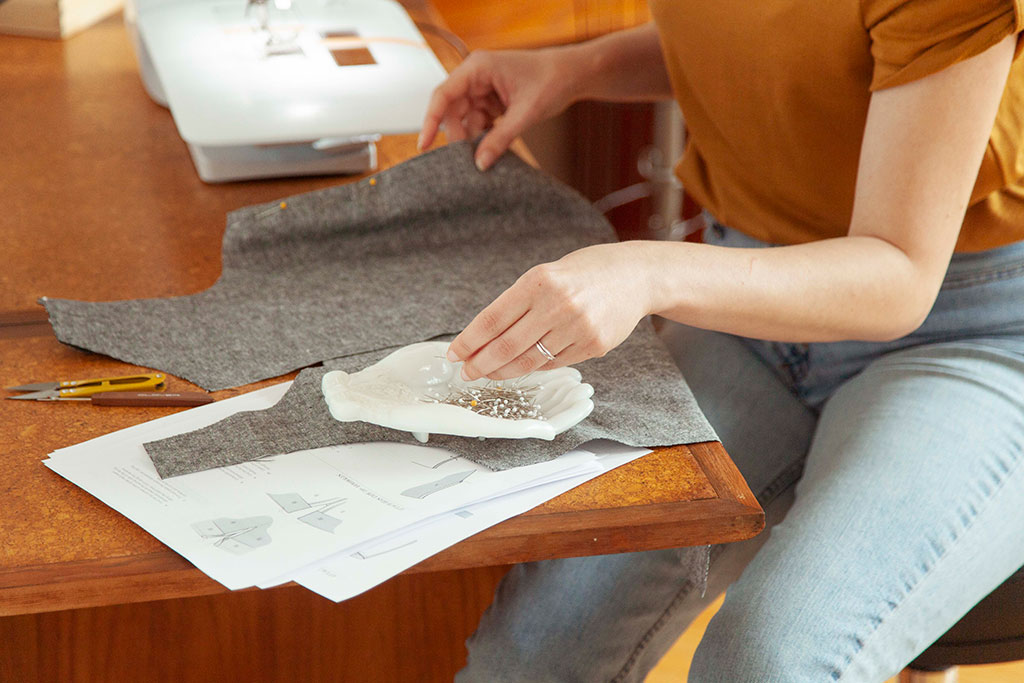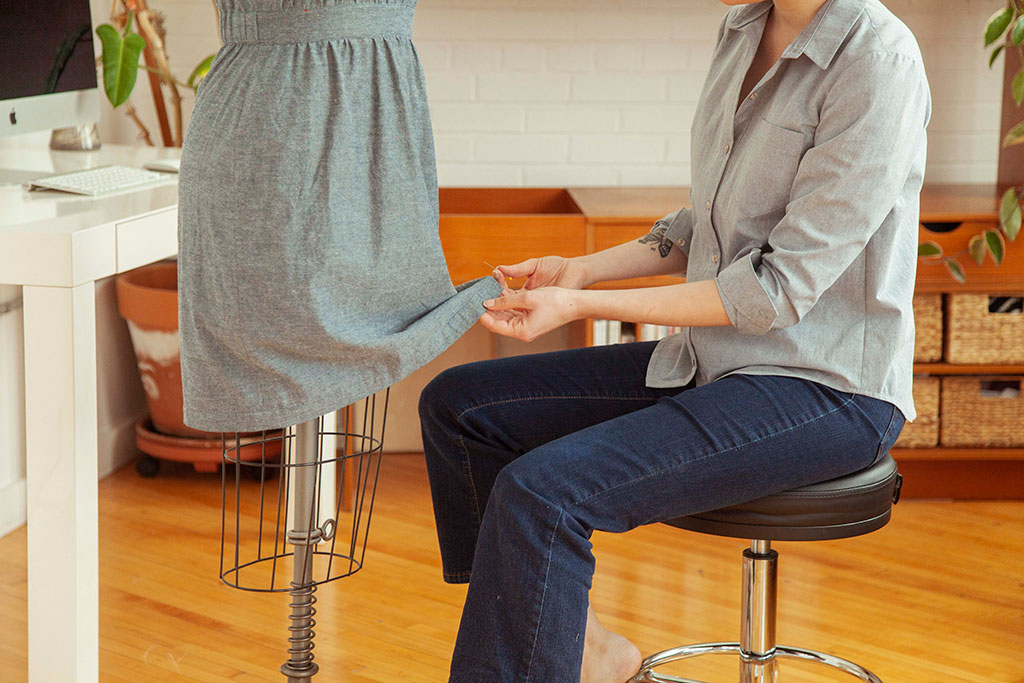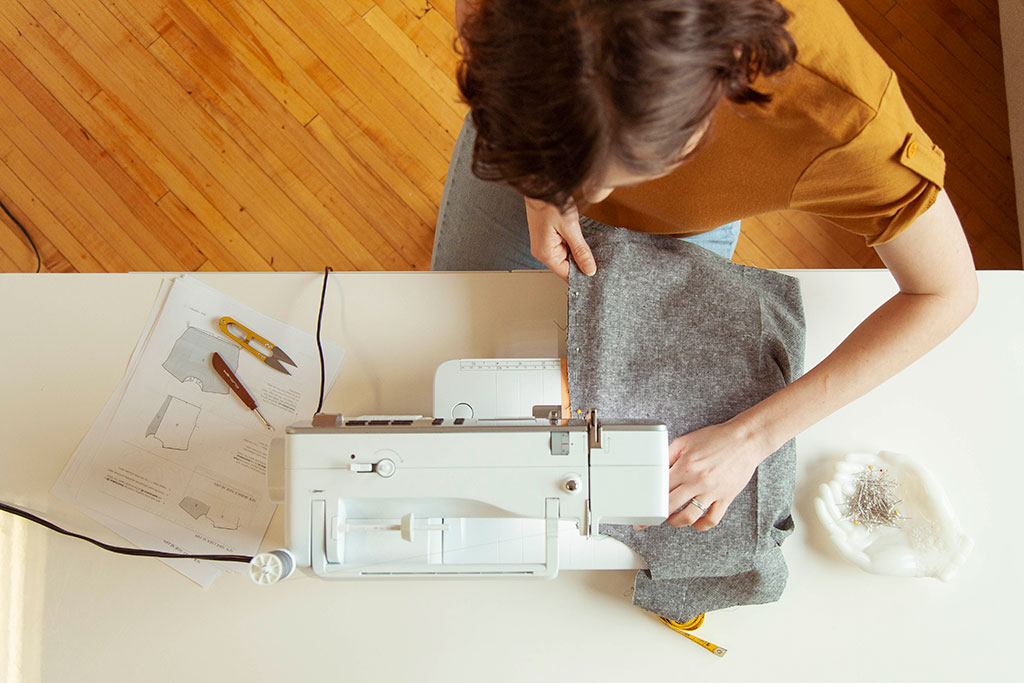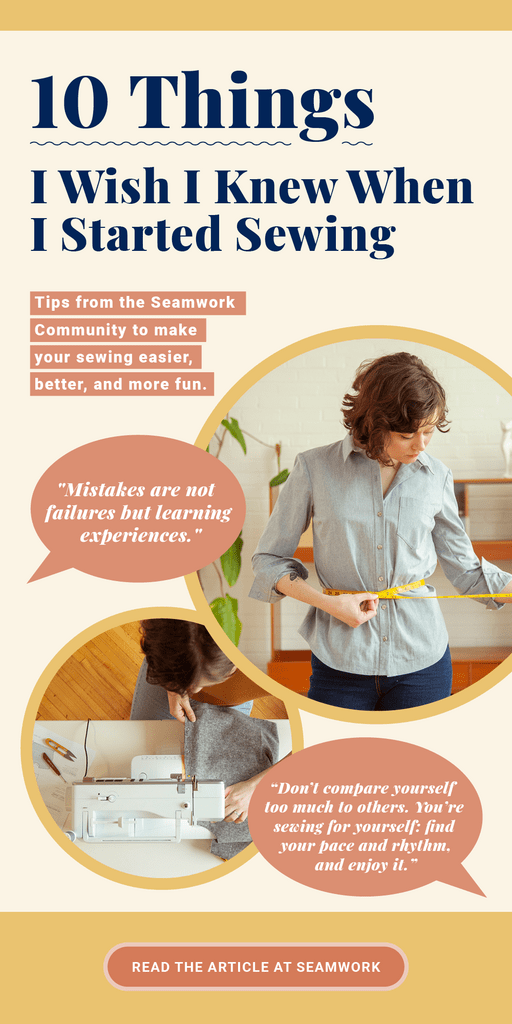No question is too big or too small when you’re chatting with people who love to sew.
Posting to the Seamwork Community is a great way to get answers to those sewing questions that simply must be answered by fellow sewists. Our Community is private, so every single maker is passionate about the craft, empathetic, inspiring, and full of knowledge.
Here are ten lessons straight from the Community that will help you, whether you’re new to this or think you know it all (note: you never know it all; sewing is a forever-skill).
1. It’s ok to fail.
It’s ok to fail, and most mistakes aren’t even failures at all. Like Audra posted on the Seamwork Community, “mistakes are not failures but learning experiences.”
Next time you make a mistake, jot down what you learned and do it differently next time.
"Mistakes are not failures but learning experiences."
Read more about how to work through mistakes in Julicia’s article Create in Abundance from issue 69 of Seamwork.

2. Learn how to read a pattern (properly).
Do you know what all those circles, triangles, crosses, arrows, and other markings on a pattern are?
Before starting a pattern—especially if you’re a beginner—read the entire pattern. Take note of the markings and look up any that you don’t recognize. It’s a little bit like learning a new language, but you’ll pick it up quickly.
3. Start with a skill you know.
Even if you learn how to live with your mistakes, you don’t want to lose steam by taking on a project outside of your current skillset. Pick a project that has familiar skills that you feel comfortable sewing, but teaches you one new skill.
Angeline said it succinctly in the Community, “When I pick a new project, I try to select a pattern that involves techniques I know (so I can refine my skills) and one I don’t (so I learn something new).”
"When I pick a new project, I try to select a pattern that involves techniques I know (so I can refine my skills) and one I don’t (so I learn something new)."
Totally new to sewing? No shame in sewing a pillowcase. You’ll learn how to hem and sew corners, and you can build it all from there. Then read this article, 10 Easy Seamwork Patterns for Beginners and keep growing those skills. This is an approach you can use throughout your entire sewing journey.
4. Don’t skip pressing.
If you think sewing is all about making stitches on your machine, you have another thing coming. Pressing is just as important. Pressing your seams as you go has the power to transform your garment—and smooth out any puckers or bumps. Like Pamela says on the Community, “Don’t skip pressing. Ever. Pressing is not the same as ironing. Your iron is your best friend.”
"Don’t skip pressing. Ever. Pressing is not the same as ironing. Your iron is your best friend."
Want to learn how pressing is different from ironing? Read this article from sewing expert, David Page Coffin, in issue 22 of Seamwork.

5. Get your body’s data.
Your measurements are data that help you get a great-fitting garment. Take your measurements often and compare them to both the size chart and the finished garment measurement chart.
To learn how to take your measurements, watch this video: How Measurements Make Your Sewing Better.
While you’re taking your measurements, it’s a good time to learn about ease. Ease will determine how the garment fits on your body—garments with more ease are loose and flowy, and garments with less ease are more fitted.
To learn about ease, watch this video: All About Ease: How to Understand Ease in a Sewing Pattern.
6. You can (and should) break the rules.
Sometimes, we’re tempted to call our sewing instructions “sewing suggestions,” because the more time you spend sewing, you’ll realize that there is always more than one way to do something. Put 100 makers in a room and tell them to sew a pocket, and they’ll come up with a dozen or more methods.
When you’re just starting, you might feel like you have to learn the “right” way, but after a little while, you’ll see that everyone has a different way of picking up new techniques. Books, Instagram, YouTube, local sewing teachers, the Seamwork Classroom, find what works for you—and don’t be afraid to Google it.

7. Learn how you feel about muslins.
Notice we didn’t say you need to make a muslin. That is always good advice, but for some makers, it’s just not realistic. If making a muslin prevents you from sewing the real thing, then muslining might not be for you.
That being said, making a muslin always has two big benefits: you see how the garment fits so you can make adjustments, and you get to practice the skills you need to make the garment. If you don’t need to practice sewing zips, pockets, finishing seams, or any of those other details, you can just sew a quick muslin to give you an idea of the fit.
Watch this video for tips to sew fast and easy muslins.
8. Don’t compare yourself to others.
If you tend to browse hashtags and scour blogs before sewing up a garment for yourself, you can start to feel intimidated. Remember, the best thing about sewing—hands down—is that it is your creative process from start to finish. You design your entire sewing experience, just like you design the clothes you’re going to make and wear.
"Don’t compare yourself too much to others. You’re sewing for yourself: find your pace and rhythm, and enjoy it."
Angeline has some great advice for the Seamwork Community, “Don’t compare yourself too much to others. You’re sewing for yourself: find your pace and rhythm, and enjoy it.”

9. Care for your machine and tools.
Aside from investing in quality tools, taking care of your machine and all the items in your sewing kit is just as important. Think you can skip oiling and not clean your serger for a few months? Just don’t.
This video has five tips for machine maintenance, and this article by Brooks Ann Camper helps you upgrade your sewing with professional-quality tools, furnishings, and fabrics.
10. It’s just fabric.
Let’s say your project fails and you can’t wear your garment—your only true loss is some time and a few yards of fabric. Think about all the things you’ve gained. You know what not to do next time, and you probably earned some confidence, even if you don’t know it yet.
"As much as we love certain materials, I promise there is always more. There will always be more fabric, more patterns."
As Wallis, our patternmaker, shared, “As much as we love certain materials, I promise there is always more. There will always be more fabric, more patterns. Years from now you will appreciate the beautiful things you made rather than dwell on your sewing failures.”
If you’re still not convinced, and you’re really heartbroken about your lost fabric, see tip #7.

